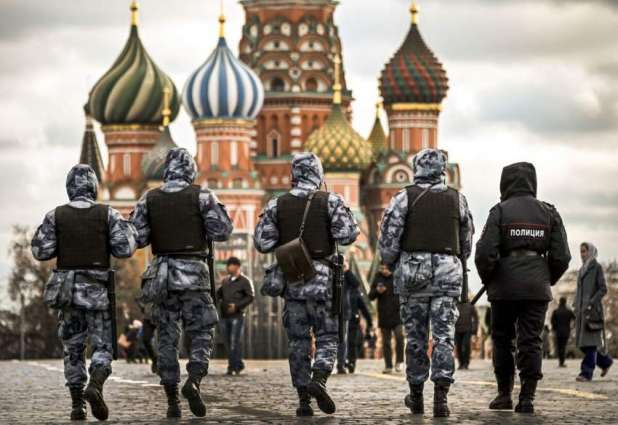In this digest, we will tell you whether Russians believe that education and success are connected, about a dark matter particle detector developed by Siberian scientists, and plans to open a museum dedicated to the Great Bridge over the Volkhov River in Veliky Novgorod
MOSCOW (Pakistan Point News / Sputnik - 16th May, 2023) In this digest, we will tell you whether Russians believe that education and success are connected, about a dark matter particle detector developed by Siberian scientists, and plans to open a museum dedicated to the Great Bridge over the Volkhov River in Veliky Novgorod.
About a third of Russians are sure that it is impossible to succeed in Russia without education and knowledge, a fresh poll by the Russian Public Opinion Research Center (VCIOM) showed on Tuesday.
A total of 31% of respondents believe that success is impossible in Russia without education and knowledge, while 17% think that success cannot be achieved without money and financial opportunities, as well as without good acquaintances and personal connections.
The majority of Russians, or 86%, said that it is more important to work hard and constantly learn to succeed, and only 8% believe that it is necessary to have a natural talent for success.
When asked to describe a successful person, Russians said that this is someone who achieves their goals (15%), is financially secure or has good earnings (10%), has a permanent, good job (6%), and has an education (5%).
SEARCHING FOR DARK MATTER PARTICLES
Specialists at the Budker Institute of Nuclear Physics in the Siberian town Akademgorodok have developed an argon-based detector that can search for particles of dark matter in the universe, the scientific institute said on Tuesday.
According to modern concepts, only 5% of the energy-mass of the universe consists of ordinary matter. The rest is dark energy (69%) and dark matter (26%). Dark matter got its name due to the fact that it does not participate in electromagnetic interaction, but manifests itself in gravitational interaction. Despite the fact that no one has directly observed dark matter and nothing is known about the nature of its particles, there is a lot of indirect evidence of its existence.
"Specialists ... have developed a two-phase argon-based cryogenic detector and demonstrated with it a concept that can be used to detect light in the visible range from dark matter particles. In experiments on an argon detector, scientists showed the possibility of using it to search for WIMP (Weakly Interacting Massive Particle ) ... that are the main candidates for the role of dark matter particles," the institute said in a statement.
There are direct and indirect ways of searching for WIMP. Indirect search methods include the detection of WIMP annihilation products from various astrophysical sources or the search for a specific pattern of particle expansion during particle interaction in colliders. A direct search is performed by detectors designed to observe the supposed elastic scattering of WIMP on atomic nuclei.
The most progressive way to search for WIMP has recently become the one using two-phase � liquid-gas � detectors based on noble gases such as argon or xenon. The institute, in cooperation with the laboratory of Novosibirsk State University, is developing exactly this direction. Successful detection of weakly interacting massive particles by a direct method would provide the most definitive evidence that they are responsible for the dark mass in the universe.
The experimental facility at the nuclear physics institute is small � it uses only about three liters of liquid argon. An increase in the mass of the working substance of the detector will make it possible to achieve its maximum sensitivity in the future.
The Museum dedicated to the Great Bridge is planned to be created in Veliky Novgorod to showcase pieces found during underwater archaeological research on the Volkhov River, the press service of the Novgorod State Integrated Museum Reserve said on Tuesday.
Archaeologists continue to study the Great Bridge of ancient Novgorod, which is now at the bottom of the Volkhov River. The exact time of construction of the crossing is unknown. Underwater research, which lasts 17 years, confirms that the bridge has been rebuilt many times since the 12th century. The goal of archaeologists is to study the chronological, spatial, technological characteristics of the Great Bridge, material evidence of its role in the life of the medieval Novgorod Republic.
"Archaeological objects and remains of bridge structures found during excavations are expected to be used to create the Museum of the Great Bridge in Veliky Novgorod," the museum said in a statement.
The ancient bridge was a complex engineering structure, large and very expensive, with very long spans � at least 16 meters (52.5 feet).
Archaeologists have already found two sites of long-term existence of bridges across the Volkhov River. An analysis of cultural layer allowed researchers to identify a chronological period of the existence of constant economic activity on the bridge � trading, the existence of small craft workshops � which was from the early 15th century to the early 17th century. A significant collection of artifacts of handicraft production, trade, social and political activities has been collected.




